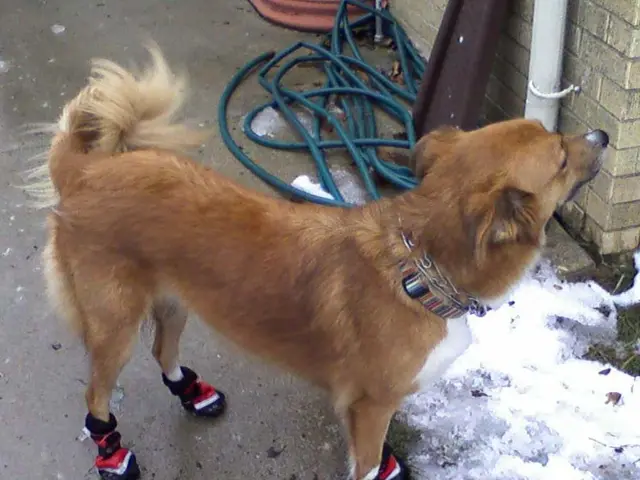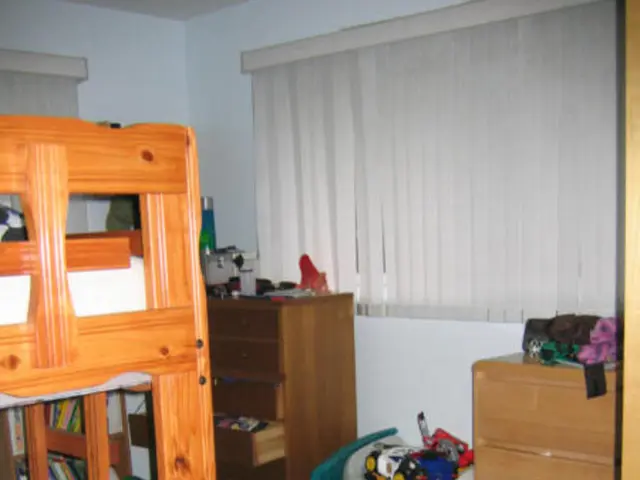VR Dance Project 'Ghost Dance' Offers Black Mirror-esque Experience in Real Life
In the digital age, dancing, a traditional human experience, takes a leap into the metaverse with Lusófona University's Ghost Dance research project. Led by Rui Antunes and Cecilia de Lima, this consortium aimed to explore how avatar dance duets could stand up against the real deal by using motion capture technology.
In the era of COVID-19, as the world increasingly turns to technology for communication, the researchers questioned its impact on more physical activities, like dancing. When people move in sync to the rhythm, it's human instinct at play. But what if your dance partner wasn't another person? Instead, you step into the metaverse and find a virtual dance partner waiting for you.
The research team's mission was to use Movella's motion capture technology to create a virtual dance duet experience. They captured choreography through a markerless inertial suit, allowing them to work in their usual setting (Escola Superior de Dança's dance studios) and achieve high-quality data. The dancers felt comfortable performing in the suits, as if they were wearing regular clothes, allowing for a natural dance experience.
The virtual dance partners came alive when the dancers donned a VR headset. Though these avatars lacked the emotional connection inherent in human interaction, the project's goal was to create viable human-technology duets. After using motion capture to choreograph minute-long sequences based on the Laban movement analysis, the researchers hoped to improve virtual dancing experiences by teaching the characters to learn and move independently.
The Ghost Dance project highlighted differences between dancing with a human partner and a virtual avatar. A human partner provides sensory and physical cues such as body language, breathing, and footstep sounds. On the other hand, dancing with a virtual avatar stripped away these subtle, instinctual aspects.
The research confirmed that avatar dancing could be a viable option, even if it doesn’t replicate the tactile and emotional richness of human interaction. To take it further, researchers aim to secure funding for specific attributes of the virtual dance partner, such as assessing eye contact, facial expressions, and realism.
Looking ahead, motion capture technology opens exciting possibilities for choreography and artistic expression. However, it still faces challenges in fully replicating the complexity of human movement and interaction. As digital spaces become more integrated into our daily lives, Ghost Dance raises fundamental questions about how technology will reshape dance as an art form in the future.
Sources:
- In the realm of art, the Ghost Dance research project, led by Rui Antunes and Cecilia de Lima, delves into 3D avatar dance duets, employing Movella's motion capture technology.
- The creative team behind the project seeks to merge science and technology to explore the potential of UX design in the health-and-wellness sector, focusing on fitness-and-exercise and lifestyle.
- As people move from physical to virtual spaces, the project underscores the need for data-and-cloud-computing solutions to ensure seamless integration and improvements in virtual dance experiences.
- The researchers aim to develop a realistic avatar that aligns with UI design principles, offering an engaging layout for a more natural and immersive dance experience.
- Artists worldwide can leverage this technology to create poster designs showcasing their creative interpretations of the virtual dance duets, fostering a new form of digital expression.
- In the realms of home-and-garden and entertainment, an era of virtual dance parties is on the horizon, where social media can connect people globally for collaborative dance performances.
- As avatars become indistinguishable from their human counterparts, the line between technology and dance continues to blur, raising questions about the future impact of social-media on dance as an art form.
- The project serves as a testament to how technology can enhance artistic expression, fostering new forms of creative dance duets in the metaverse.
- To further this exploration, the team plans to research the role of further attributes, such as eye contact, facial expressions, and movements, in creating a more emotionally engaging and realistic virtual dance partner.
- The Ghost Dance research project not only illuminates new possibilities for human-technology duets in the realm of art but also raises questions about the broader impact of technology on various aspects of life, from physical activities to dance, and beyond.








